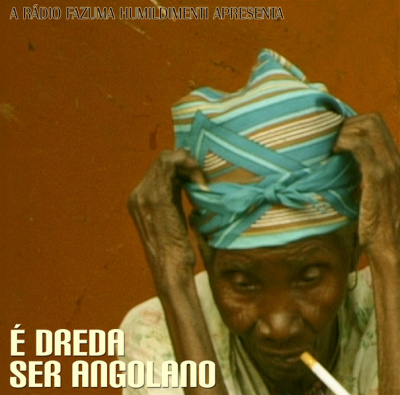E Dreda ser Angolano
A documentary film on the Angolan capital Luanda. The film captures its madness, its music, and people.
Take a seat, and listen to radio Dreda…
Hop on and squeeze into your seat in the Kandongueiro (minibus, Luandan public transport), and listen to the radio that plays.
It’s radio Dreda, the newest radio in town, and it will take you on a trip to Luanda, showing you the many aspects of its madness, its horrors, its creative minds and its wonders, all through a musical trip.
É Dreda ser Angolano simply means its cool to be Angolan. It’s inspired on a music album (Ngonguenhação by Conjunto Ngonguenha), but is in itself the origin of a wonderful hip hop soundtrack.
This is not a film, it is a radio show, and it’s a musical radio show, and yet the show is not about the music. It’s about a city and its people, their creativity, both people that try to make a living out of that creativity, and all the millions of others that try to find other ways to create the ends. Luandans don’t strive to make those ends meet, just creating the ends is already enough of a challenge.
The music is the film. It is there because it’s made by musicians, its made with a big love for the music, and the music explains the madness, or tries to, while at the same time offering relief from it, or rather, creating another madness, a positive, vibrant, pulsating madness. Poetry, hip hop, kuduro, all form part of this visit to Luanda.
We hear the voices of artists like Shunnoz Fiel, Sebém, the wonderful Fridolim… we listen to tracks by MCK (say «MC Kapa»), the kuduro outfit «Os Turbantu», the Conjunto Ngonguenha, and we listen to the voices of many on the streets…
All of this mixes into a work of art captured on video. It shies away from a narrative, but it tells many stories, it is musical in its essence, and sparks with love for detail. These details are very apparent in the marriage between the images and sound of the film, in the way things are structured and small elements that are so important for the makers, up until the moment the passengers exit the Kandongueiro.
Luanda is a town with all the extremes of the world. Angola was seen by the Portuguese as the jewel colony, where everything was in abundance, both in nature and in the culture. The country is one of the «big» African nations. It went through forty years of war. Luanda was built for five hundred thousand inhabitants but now boast more than four million, it lacks the most basic provisions for most of its inhabitants, and yet it is officially the most expensive city in the world. The cultural life in Angola is extremely dynamic, and delivers new trends with great frequency.
Dreda arrives at capturing the city, its madness, through the music, without embellishing it or wanting to hide, without advocacy, just showing love for the country, for the city, and for the music.

Biography
Published on September 30, 2010
Last updated on April 09, 2024
Topics
Why do people in Karachi yell rather than talk and how does the sound of Dakar or Luanda affect music production?
From Beyoncés colonial stagings in mainstream pop to the ethical problems of Western people «documenting» non-Western cultures.
What happens when a Muscovite electronic producer meets Circassian folk musicians? What rules are needed for intercultural cooperation between individuals?